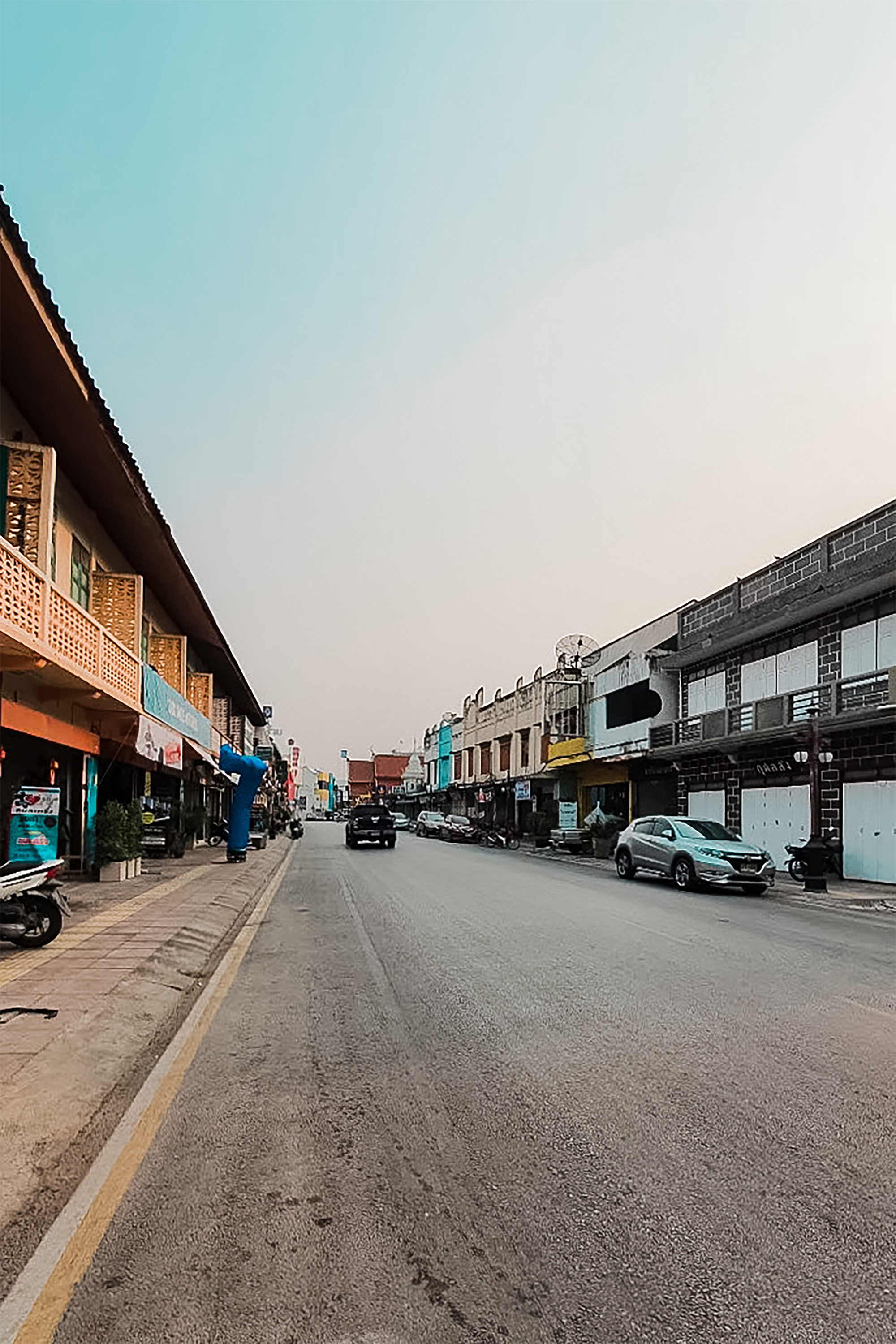ความเร่งด่วนในการอนุรักษ์สถาปัตยกรรมที่มีคุณค่าบนถนนสายหลักในเมืองเก่าลำพูน
Main Article Content
บทคัดย่อ
สถาปัตยกรรมบนถนนสายหลักในเมืองเก่าลำพูน เป็นสถาปัตยกรรมที่มีคุณค่าซึ่งสะท้อนอัตลักษณ์และบรรยากาศของเมืองเก่าลำพูนได้อย่างชัดเจน บทความวิจัยนี้มีวัตถุประสงค์เพื่อสำรวจและประเมินคุณค่าความสำคัญ ทั้งทางด้านประวัติศาสตร์ รูปแบบสถาปัตยกรรม และภูมิทัศน์ชุมชนรวมถึงสภาพของสถาปัตยกรรม เพื่อจัดกลุ่มลำดับความเร่งด่วนในการการอนุรักษ์สถาปัตยกรรมเหล่านั้น บริเวณถนนสายหลักในเมืองเก่าลำพูน คือ แนวแกนเหนือ-ใต้ และตะวันออก-ตะวันตกของเมือง ได้แก่ ถนนเจริญราษฎร์ ถนนอินทยงยศ ถนนไชยมงคล ถนนมุกดา ถนนประตูลี้ และถนนวัดพระยืน รวมจำนวน 123 หลัง ประกอบด้วย คุ้มเจ้า สถานที่ราชการ บ้านพักอาศัยเอกชน อาคารพาณิชย์ อาคารพาณิชย์พักอาศัย และเรือนพาณิชย์ โดยมีแบบสำรวจ แบบสัมภาษณ์ และแบบประเมินเป็นเครื่องมือที่ใช้ในงานวิจัย การเก็บรวบรวมข้อมูล ทำในช่วงเดือนพฤษภาคม–ธันวาคม พ.ศ.2562 การวิเคราะห์คุณค่าของสถาปัตยกรรมที่สำคัญ ใช้คะแนนระบบ 5 ระดับคะแนน คือ (5) ดีมาก (4) ดี (3) ปานกลาง (2) น้อย (1) น้อยที่สุด ส่วนการวิเคราะห์สภาพภายนอก หรือรูปด้านหน้าอาคาร แบ่งออกเป็น 3 ระดับ คือ (3) สภาพดีเยี่ยม (2) สภาพดีปานกลาง (1) สภาพทรุดโทรม โดยให้ค่าน้ำหนักที่ความสำคัญด้านประวัติศาสตร์ และภูมิทัศน์ชุมชนสูงที่สุด จากนั้นจึงรวมคะแนนและนำมาจัดกลุ่มเพื่อเสนอแนะลำดับความสำคัญในการอนุรักษ์ ด้วยการพล็อตกราฟ 2 แกน โดยแบ่งออกเป็น 4 กลุ่ม คือ (1) สถาปัตยกรรมคุณค่าดีมาก สภาพไม่ดี (ต้องการซ่อมแซมทันที) (2) สถาปัตยกรรมคุณค่าดี สภาพไม่ดี (เร่งด่วน) (3) สถาปัตยกรรมคุณค่าดีมาก สภาพดี (ระยะกลาง) และ (4) สถาปัตยกรรมคุณค่าดี สภาพดี (ระยะยาว) พร้อมทั้งนำเสนอแนวทางในการอนุรักษ์สถาปัตยกรรมที่มีคุณค่าเหล่านี้ให้สอดคล้องกับลักษณะความเป็นย่านในเขตเมืองเก่า ข้อมูลดังกล่าวสามารถนำเสนอต่อหน่วยงานท้องถิ่น คนในชุมชน รวมทั้งเจ้าของสถาปัตยกรรม เพื่อใช้ประกอบการตัดสินใจที่เกี่ยวข้องการอนุรักษ์สถาปัตยกรรมที่มีคุณค่าบนถนนสายหลักในเมืองเก่าลำพูนอย่างยั่งยืนต่อไป
Article Details
เอกสารอ้างอิง
Ashworth, G. (1991). Heritage planning. Groningen: Geo Pers.
Burke, G. (1976). Townscape. London: Pelican Books.
Chapman, H. (1975). The machinery of conservations: finance and planning problem. Town Planning Review, 46 (4), 365-382
Cultural and Natural Management Bureau, (2010). Khrongkarn chat tham phaenphang patibatkarn anurak mueang Lamphun lae mueang Nan. (In Thai) [The plan for the conservation of Lamphun and Nan Project]. (Final Report). Bangkok: Phisuth Technology.
Danpaibun, P. (2019, August 28). Interview. The problem of valuable architecture in Lamphun old town.
Feilden, B. (2003). Conservation of historic buildings. (3rd ed.). London: Routledge.
ICOMOS. (2013). The burra charter: the Australia ICOMOS charter for places of cultural significance. Retrieved August 17, 2020, from https://australia.icomos.org/wp–content/uploads/The–Burra–Charter–2013–Adopted–31.10.2013.pdf
Lynch, K. (1996). The image of the city. Cambridge: MIT Press.
Ministry of Natural Resources and Environment. (2011). Pra kat khet phuentee mueang kao Lamphun. (In Thai) [Announcement of the area in the old city of Lamphun]. Bangkok: Author.
Phusavang, N. (2019, August 28). Interview. The problem of valuable architecture in Lamphun old town.
Rapoport, A. (1990). The meaning of built environment: a non–verbal communication approach. Tucson: The University of Arizona Press.
Ruengprapan, C. (1996). Sathiti phuen than. (In Thai) [Basic statistic]. Khon Kaen: Klang nana wittaya printing.
Sukkatajaiin, P. (2009). Phrathat Hariphunchai. (In Thai) [Phrathat Hariphunchai]. Chiang Mai: Fine Art Office 8.
Tansukanun, P. (2013). Karn anurak chumchon mueang. (In Thai) [Urban conservation]. Chiang Mai: Maejo University Press.
Tansukanun, P., et al. (2019). Khrongkarn neawtang patthana yannayu yang yangyuen nai khet thetsaban mueang Lamphun. (In Thai) [Livable & sustainale neighbourhood development guideline : Lamphun municipality]. (Final Report). Bangkok: Thailand Science Research and Innovation.
Worskett, R. (1969). Character of towns. London: The Architectural Press.


